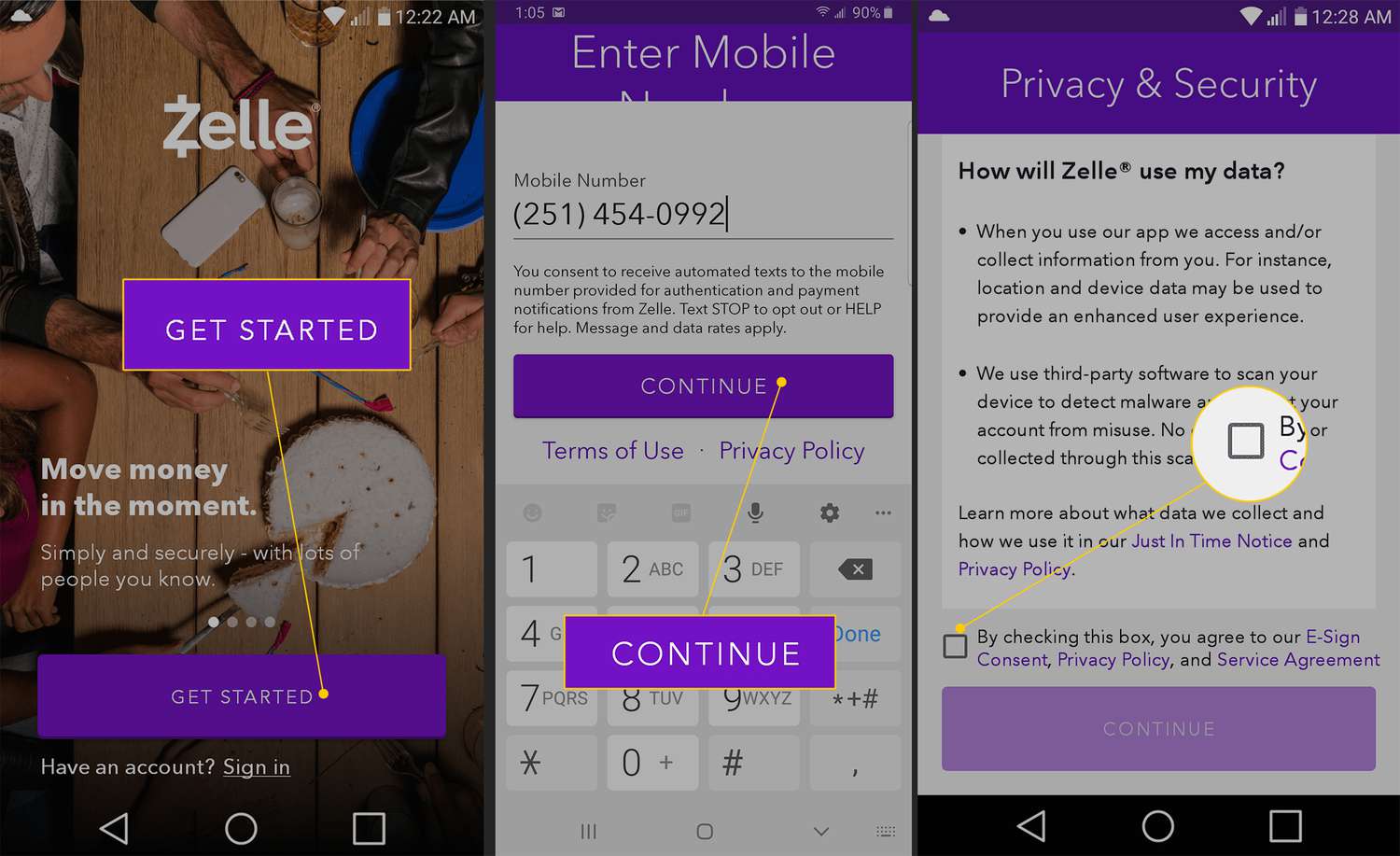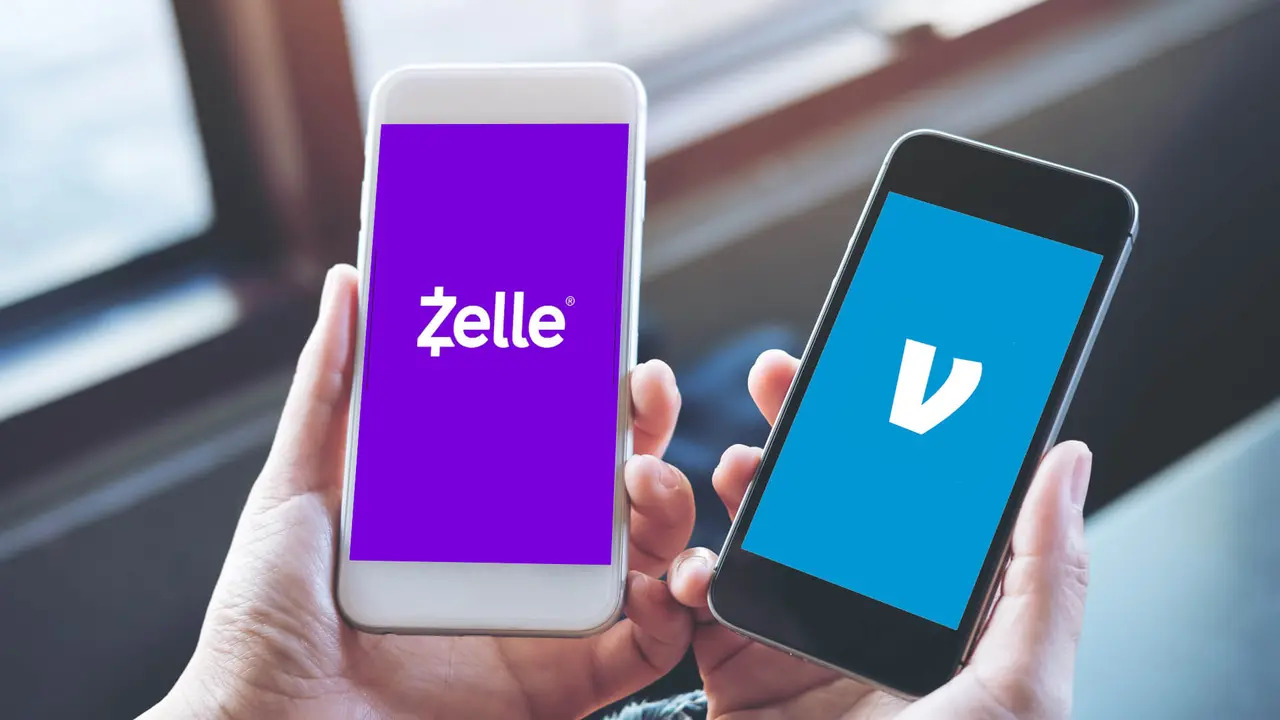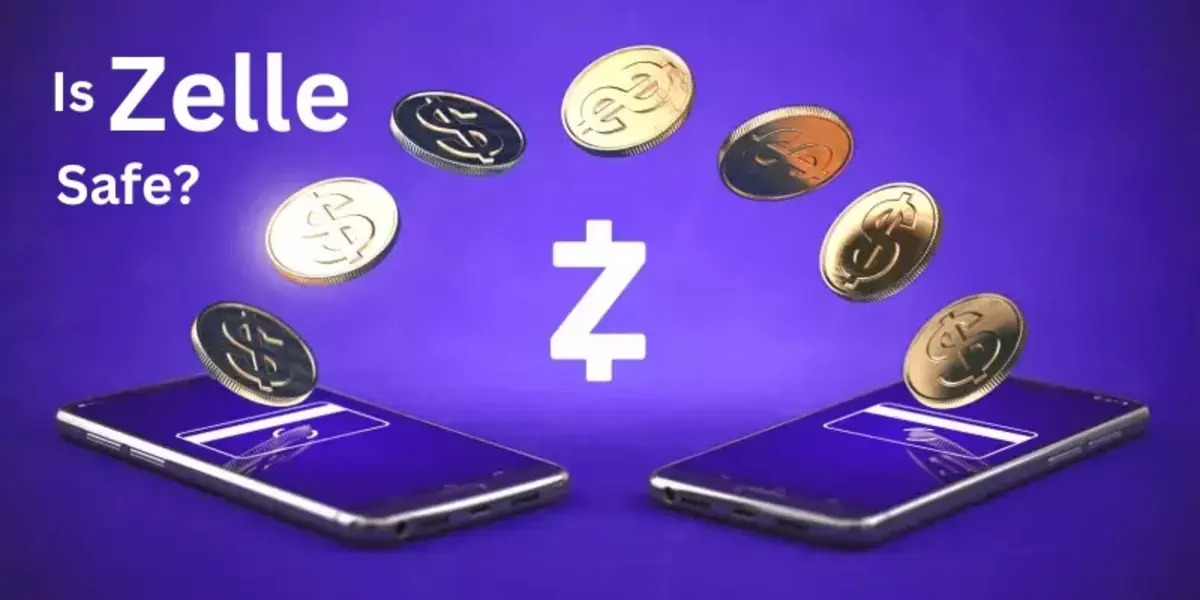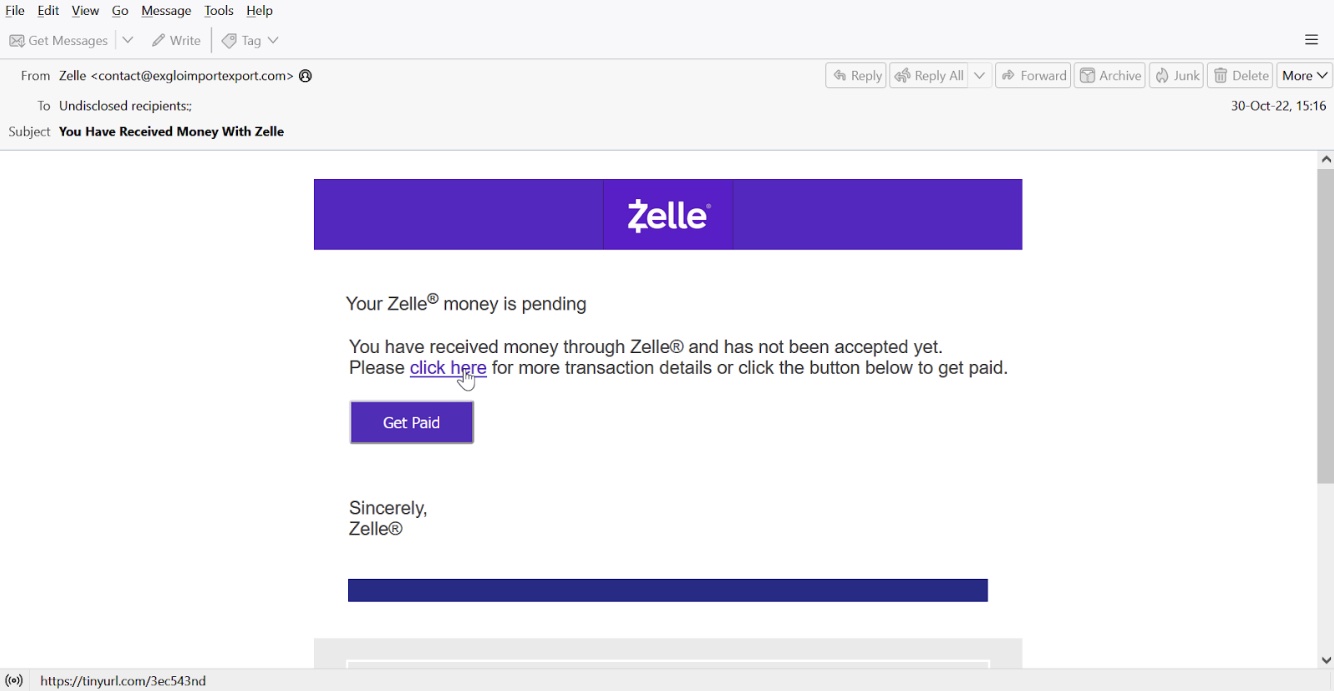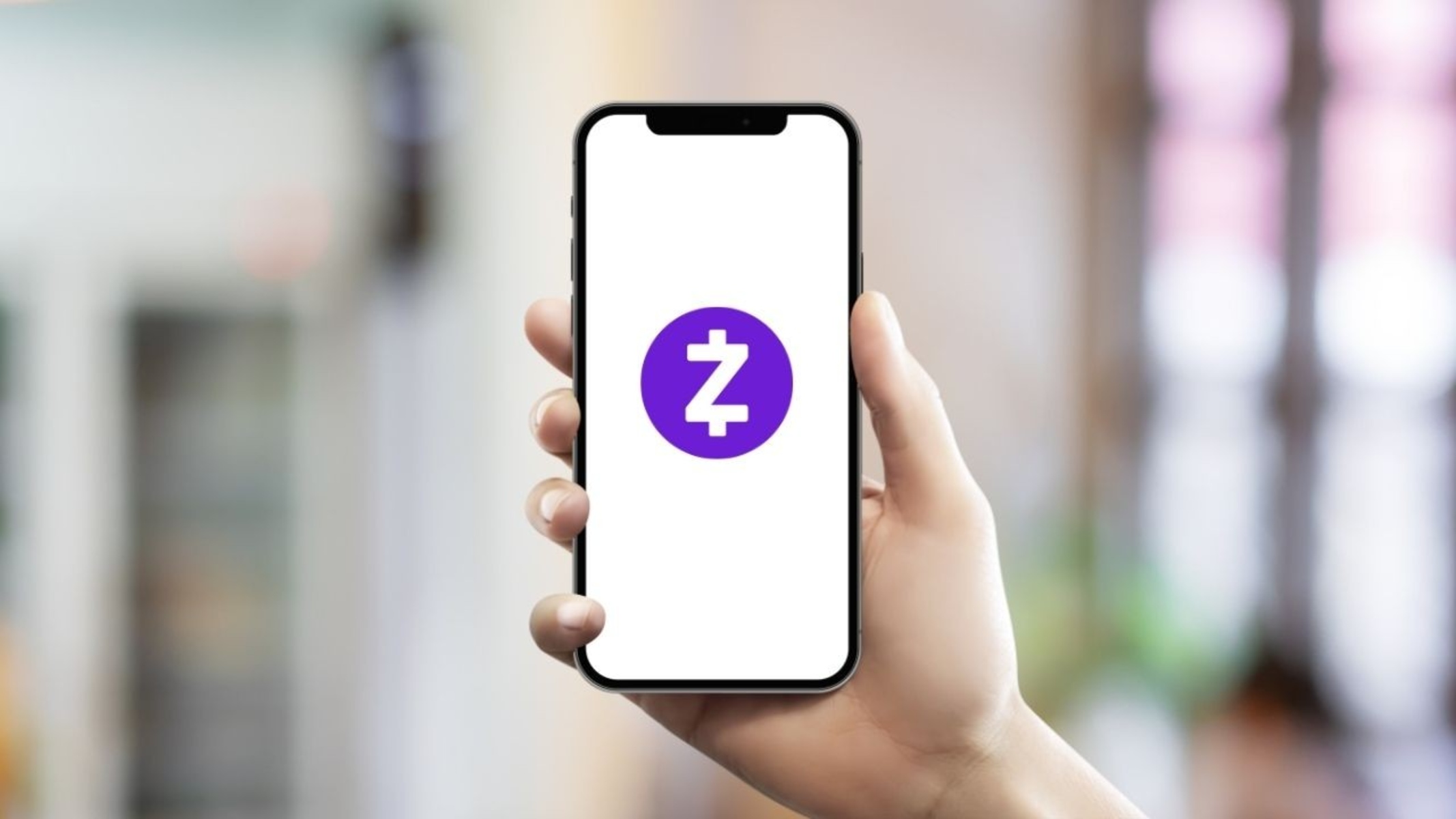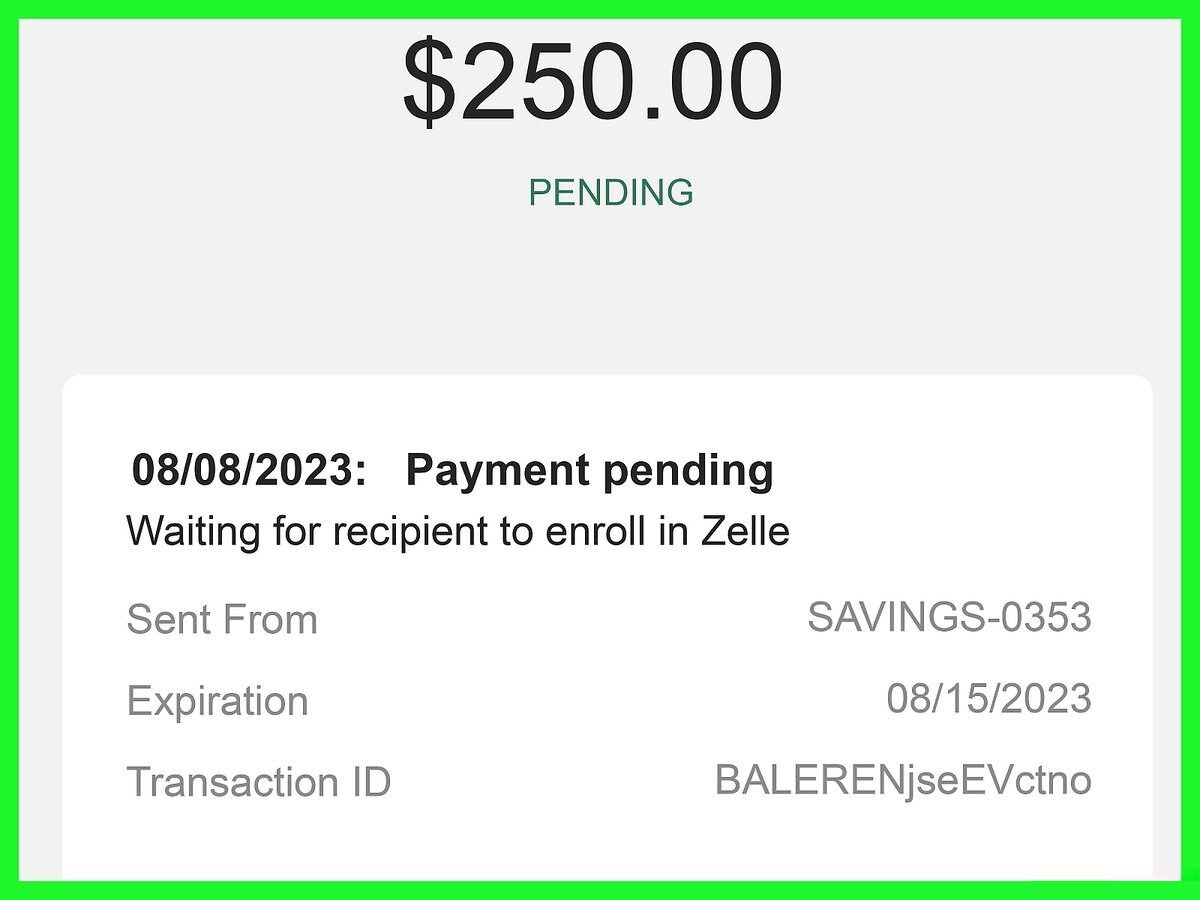What Is Zelle?
Zelle is a popular digital payment service that allows users to send and receive money conveniently and securely. It provides a fast and hassle-free way to transfer funds between individuals, eliminating the need for cash or checks. With Zelle, you can make payments directly from your bank account to another person’s bank account, using just their email address or mobile phone number.
Launched in 2017, Zelle is a peer-to-peer payment platform that has gained widespread popularity due to its simplicity and wide network of participating banks and credit unions. It is available as a feature within many banking apps, making it easily accessible to millions of users.
Unlike other payment apps or services, Zelle functions as an intermediary between banks, enabling seamless transactions directly between users’ accounts. This means that funds are transferred quickly and securely, usually within minutes. Additionally, Zelle is a convenient option for splitting bills with friends, paying back a family member, or even purchasing goods and services from small businesses that accept Zelle payments.
Zelle’s user-friendly interface and intuitive features make it a preferred choice for many individuals, as it offers a straightforward and reliable way to send money with just a few taps on your smartphone or clicks on your computer.
It’s important to note that Zelle is only available for use within the United States and is primarily linked to U.S. bank accounts. However, with its growing popularity, there are discussions about expanding Zelle’s services internationally in the future.
How Does Zelle Work?
Zelle operates as a digital payment network that facilitates the transfer of funds between individuals’ bank accounts. To use Zelle, you need to have a bank account with a participating financial institution and enroll in their Zelle service. Here’s how Zelle works:
- Enrollment: First, you need to download your bank’s mobile app or access their online banking platform. Look for the option to enroll in Zelle and follow the prompts to create a Zelle profile.
- Linking Accounts: Once enrolled, you’ll need to link your bank account to your Zelle profile. This step involves providing your account details and verifying your ownership.
- Recipient Information: To send money through Zelle, you’ll need the recipient’s email address or mobile phone number associated with their Zelle profile. Make sure you have the correct details before initiating the transfer.
- Transaction Initiation: Using your bank’s mobile app or online banking platform, go to the Zelle section and select the option to send money. Enter the recipient’s information, the amount you want to send, and include any additional notes if necessary.
- Confirmation and Notification: After initiating the transaction, Zelle will confirm the transfer details, including the recipient’s name and the amount being sent. Once confirmed, the recipient will receive a notification via email or SMS, informing them of the incoming payment.
- Funds Availability: Typically, the funds sent through Zelle are available in the recipient’s bank account within minutes. However, it may take longer depending on the recipient’s bank or any potential delays in processing.
- Transaction History: Both the sender and recipient can view their transaction history in their respective bank accounts or through the Zelle section of their banking app. This provides a record of all completed transfers, making it easy to track and manage payments.
It’s important to note that Zelle transactions are irrevocable, meaning that once the money is sent, it cannot be canceled or refunded. Therefore, it’s crucial to double-check the recipient’s information and ensure the accuracy of the transaction details before initiating the transfer.
Setting Up Zelle
Setting up Zelle is a straightforward process that can be done within the mobile banking app or online banking platform of your participating bank. Here are the general steps to set up Zelle:
- Check Eligibility: First, ensure that your bank or credit union offers Zelle as one of its services. Most major banks in the United States are part of the Zelle network, but it’s always a good idea to verify before proceeding.
- Download the App: If you haven’t already, download your bank’s mobile app from the App Store or Google Play Store. Alternatively, you can access your bank’s online banking platform via your computer’s web browser.
- Enroll in Online Banking: If you’re not already enrolled in your bank’s online banking, you’ll need to set it up. This typically involves providing your account details, creating a username and password, and establishing security measures such as security questions or two-factor authentication.
- Access Zelle: Once you’re logged into your bank’s mobile app or online banking platform, look for the option to access Zelle. This may be located in the Payments or Transfers section of the app, but it can vary depending on your bank’s interface.
- Create a Zelle Profile: In the Zelle section, you’ll be prompted to create a Zelle profile. This involves providing your name, contact information, and accepting the Zelle terms and conditions.
- Link Your Bank Account: Next, you’ll need to link your bank account to your Zelle profile. This may require providing your account number, routing number, or verifying your ownership through a verification process provided by your bank.
- Verify Your Phone Number or Email: To ensure the security of your Zelle profile and protect against unauthorized access, you may need to verify your phone number or email address. This typically involves receiving a verification code via text message or email and entering it into the app or online banking platform.
- Set Up Security Measures: It’s important to take steps to secure your Zelle account. This can include utilizing strong passwords, enabling biometric authentication if available, and keeping your mobile banking app or online banking platform up to date.
- Start Sending and Receiving: Once your Zelle profile is set up and linked to your bank account, you can begin sending and receiving money with ease. Simply enter the recipient’s email address or mobile phone number associated with their Zelle profile, enter the amount, and confirm the transaction.
It’s important to note that the exact steps may vary slightly depending on your bank’s specific procedures and the interface of their mobile banking app or online banking platform. However, the process generally follows these guidelines and should be outlined in more detail within your bank’s Zelle section or customer support resources.
Sending Money with Zelle
Sending money with Zelle is a quick and convenient process that allows you to transfer funds to family members, friends, or other individuals with just a few simple steps. Here’s how you can send money using Zelle:
- Access Zelle: Open your bank’s mobile app or log in to your online banking platform. Locate the Zelle section or option, usually found within the Payments or Transfers menu.
- Select Recipient: Choose the recipient to whom you want to send money. You can send money to someone already in your contact list or enter their email address or mobile phone number associated with their Zelle profile.
- Enter Amount: Specify the amount you want to send. Double-check the amount to ensure accuracy before proceeding to the next step.
- Add a Note: If needed, you can include a note or description of the payment to provide additional context to the recipient.
- Verify Details: Review all the details of the transaction, including the recipient’s information, the amount, and the note. Make sure everything is correct before proceeding.
- Confirm Transaction: Once you’re satisfied with the details, confirm the transaction. Zelle will process the transfer immediately, and the recipient will be notified of the incoming payment.
It’s important to note that the time it takes for the payment to become available in the recipient’s account may vary. In most cases, the funds transferred through Zelle are available within minutes. However, depending on the recipient’s bank and any potential processing delays, it could take longer.
It’s also worth mentioning that Zelle allows you to send money directly from your bank account, so there’s no need to worry about additional fees or charges typically associated with using a third-party payment app.
Keep in mind that Zelle transactions are typically non-reversible, meaning that once the funds are sent, they cannot be canceled or refunded. Therefore, it’s crucial to double-check all the transaction details to ensure accuracy before confirming the transfer.
Overall, Zelle provides a seamless and secure way to send money to individuals with ease, making it a popular choice for convenient peer-to-peer transactions.
Receiving Money with Zelle
Receiving money with Zelle is a simple and efficient process that allows you to accept funds from family, friends, or anyone who wishes to send you money electronically. Here’s how you can receive money using Zelle:
- Notification: When someone sends you money through Zelle, you will receive a notification via email or SMS, depending on your preference and the contact information associated with your Zelle profile.
- Instructions: The notification will provide instructions on how to claim the money. Typically, it will direct you to click on a link that will take you to your bank’s Zelle section or prompt you to log in to your online banking platform or mobile app.
- Verification: To ensure the security of the transaction and protect against unauthorized access, you may be prompted to verify your identity. This can involve entering a verification code sent to your email or mobile phone.
- Acceptance: Once you have accessed the Zelle section, review the details of the incoming payment, including the sender’s information and the amount. Confirm that the information is accurate and accept the payment.
- Funds Availability: After accepting the payment, the funds transferred through Zelle will be deposited directly into your bank account. In most cases, the funds are available within minutes, but depending on your bank’s policies and any potential processing delays, it may take longer.
It’s important to note that there are typically no fees associated with receiving money through Zelle. The sender initiates the transfer from their bank account, and as the recipient, you receive the funds directly into your bank account, avoiding any additional charges.
Additionally, it’s worth mentioning that Zelle allows you to view your transaction history, providing a record of all incoming payments. This makes it easy to keep track of your received funds and maintain a clear record of your financial transactions.
When receiving money through Zelle, it’s crucial to ensure that the sender has entered the correct email address or mobile phone number associated with your Zelle profile. This helps to ensure that the funds are directed to the intended recipient.
Overall, Zelle provides a convenient and secure way to receive money, allowing you to quickly and easily access funds sent to you by others, directly into your bank account.
Security Measures with Zelle
Zelle is committed to providing secure and reliable money transfers, implementing various security measures to protect users’ financial information and prevent unauthorized access. Here are some of the security measures and best practices employed by Zelle:
- Encryption: Zelle utilizes industry-standard encryption technology to safeguard the transmission of data between users’ devices and the Zelle platform. This ensures that sensitive information, such as bank account details, remains secure.
- Authentication: Zelle implements multiple layers of authentication to verify users’ identities and protect against fraudulent activity. This includes the use of unique usernames, passwords, PINs, or biometric authentication methods, depending on the capabilities of users’ mobile banking apps or online banking platforms.
- Privacy: Zelle upholds strict privacy practices and guidelines to protect users’ personal and financial information. It does not share users’ data with third parties for marketing purposes, and all transactions are conducted with the utmost confidentiality.
- Transaction Monitoring: Zelle employs advanced fraud prevention systems and monitoring tools to detect and prevent suspicious or unauthorized activities. These systems analyze transaction patterns and behaviors to identify any anomalies that may indicate fraudulent activity.
- Dispute Resolution: Zelle provides a straightforward process for users to report and resolve any potential issues with transactions. In the event of unauthorized transactions or disputes, users can contact their bank or credit union to initiate an investigation and seek resolution.
- User Education: Zelle educates users about best practices for secure financial transactions and online safety. This includes recommending strong passwords, regular account monitoring, and awareness of common scams or phishing attempts to protect users from potential threats.
- Participating Bank Security: As Zelle is integrated within banks’ existing mobile banking apps and online banking platforms, the security measures implemented by the participating banks also apply to Zelle transactions. Banks follow strict security protocols and invest in robust technology to protect users’ accounts and information.
While Zelle employs strong security measures, it’s important for users to take precautions to further protect their accounts. This includes regularly updating mobile banking apps or online banking platforms, using strong and unique passwords, being cautious of phishing attempts, and promptly reporting any suspicious activity to their bank or credit union.
By understanding and following these security measures and best practices, users can confidently utilize Zelle for fast, secure, and reliable digital money transfers.
Zelle vs. Other Payment Apps
Zelle is a popular payment app that offers unique features and advantages compared to other digital payment platforms. Here’s a comparison of Zelle with other payment apps:
Speed of Transactions: One of the standout features of Zelle is its speed. With Zelle, funds are typically transferred within minutes, making it one of the fastest options for sending and receiving money. In contrast, some other payment apps may have longer processing times, which can be inconvenient when immediate access to funds is needed.
Bank Integration: Zelle’s integration with a wide network of banks and credit unions sets it apart from many other payment apps. Since Zelle is directly integrated into the mobile banking apps or online banking platforms of participating financial institutions, users can easily access and use the service without needing to download a separate app or create a new account.
No Fees: Zelle stands out for its no-cost money transfers. Unlike some other payment apps, Zelle does not charge fees for sending or receiving money. This can be advantageous for users who want to avoid additional charges or deductions from their transactions.
Availability: Zelle is available to users in the United States and is primarily linked to U.S. bank accounts. This may limit its use for individuals outside of the United States or for sending money internationally. Other payment apps, on the other hand, may offer broader availability and international money transfer capabilities.
Security Measures: When it comes to security, Zelle employs robust encryption, authentication measures, and transaction monitoring to protect users’ information and prevent unauthorized access. However, other payment apps may have additional security features, such as two-factor authentication, encryption methods, or customizable privacy settings. It’s always important to review the security features of any payment app and follow best practices to ensure the safety of transactions.
User Base: Zelle has gained widespread popularity due to its integration with many major banks and credit unions. This extensive network of participating financial institutions makes it easy for users to send money to others who are already enrolled in Zelle. In comparison, other payment apps may have a smaller user base, which can limit the number of recipients who can receive funds seamlessly through the same app.
Additional Features: Some payment apps offer additional features beyond basic money transfers. These features can include bill splitting, peer-to-peer lending, or integration with third-party services. While Zelle focuses primarily on peer-to-peer transactions, other payment apps may offer a wider range of functionalities to cater to specific user needs.
Ultimately, the choice between Zelle and other payment apps depends on individual preferences, specific requirements, and the availability of participating banks. Understanding the differences can help users choose the payment app that best suits their needs for fast, secure, and convenient money transfers.
Common Issues and Troubleshooting with Zelle
While Zelle provides a seamless and reliable digital payment experience, there are a few common issues that users may encounter. Here are some of the common issues with Zelle and troubleshooting steps to resolve them:
Invalid Recipient Information: One common issue is entering incorrect recipient information, such as an incorrect email address or phone number associated with their Zelle profile. To resolve this, double-check the recipient’s details and ensure they are correctly entered before initiating the transaction.
Transaction Delays: While Zelle generally transfers funds within minutes, occasional delays may occur due to various factors, such as high transaction volumes or technical issues. If you experience a delay, it’s recommended to wait for a reasonable amount of time before contacting your bank or Zelle support for assistance.
Failed Transactions: In some cases, a transaction may fail due to insufficient funds in the sender’s account or other technical issues. If a transaction fails, check your account balance and make sure you have enough funds to cover the transfer. If the issue persists, reach out to your bank or Zelle support for further assistance.
Unenrolled Recipients: If you attempt to send money to someone who hasn’t enrolled in Zelle, they won’t receive the funds. In such cases, Zelle will usually send a notification informing the recipient to enroll in Zelle to claim the payment. Make sure the recipient is enrolled in Zelle before sending the funds.
Fraudulent Activity: While Zelle has security measures in place, it’s essential to stay vigilant against potential fraudulent activity. Be cautious of unsolicited requests for money, messages from unknown contacts, or suspicious emails claiming to be from Zelle. Report any suspected fraudulent activity to your bank or Zelle immediately.
Unsupported Banks: Although Zelle has a wide network of participating banks and credit unions, some smaller or regional institutions may not offer Zelle services. If your bank doesn’t support Zelle, you won’t be able to use it. In such cases, consider alternative digital payment options or inquire with your bank about future integration with Zelle.
Technical Glitches: Like any digital platform, Zelle may occasionally experience technical glitches or downtime. If you encounter technical issues, such as app crashes or transactions not going through, try closing and relaunching the app or contacting your bank for assistance. Additionally, ensure that you have the latest version of your bank’s mobile app or website browser for optimal performance.
If you encounter any issues with Zelle that cannot be resolved through troubleshooting, it is advisable to contact your bank’s customer support or Zelle’s support directly for further assistance. They can provide guidance and resolve any specific issues or concerns you may have.
Conclusion
Zelle provides a convenient and secure way to send and receive money digitally, revolutionizing the way individuals transfer funds between bank accounts. With its easy-to-use interface and widespread integration with many major banks and credit unions, Zelle has become a popular choice for peer-to-peer transactions.
Setting up Zelle is a simple process that can be done within your bank’s mobile app or online banking platform. Once enrolled, you can start sending money to recipients by entering their email address or mobile phone number associated with their Zelle profile. The funds are typically available in the recipient’s bank account within minutes, ensuring fast, hassle-free transactions.
Zelle distinguishes itself by its speed, integration with banks, and absence of transaction fees. It offers a secure and reliable way to transfer money, employing encryption, authentication measures, and transaction monitoring to protect users’ information and prevent unauthorized access.
While Zelle provides a seamless experience, it is not without its common issues. Occasional transaction delays, failed transactions, and the need for recipients to have enrolled in Zelle can cause inconvenience. However, these issues can often be resolved through careful verification of recipient information, troubleshooting steps, and prompt communication with your bank or Zelle support.
When comparing Zelle to other payment apps, it is important to consider factors such as transaction speed, bank integration, fees, availability, security measures, user base, and additional features. By carefully assessing these factors, users can make an informed decision based on their specific needs and preferences.
In conclusion, Zelle offers a user-friendly, secure, and efficient method for sending and receiving money digitally. With its wide network of participating banks and quick transaction speeds, Zelle is a reliable choice for individuals looking to streamline their peer-to-peer transfers. By following best practices and staying informed, users can make the most of Zelle’s features and enjoy a seamless digital payment experience.







